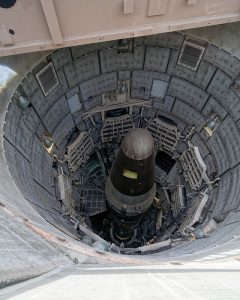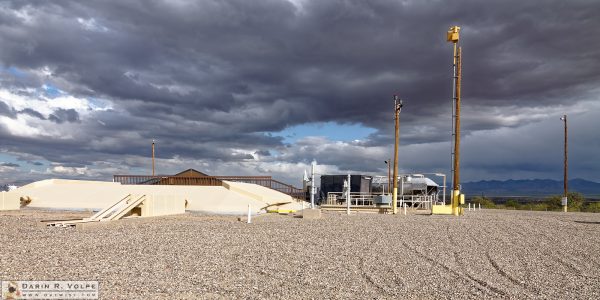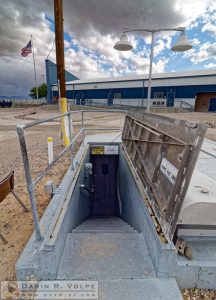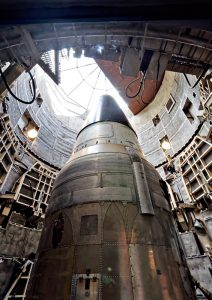Where The End of the World Might Have Started
The Titan Missile Museum was once ICBM Site 571-7, a former Titan II nuclear missile silo in Green Valley, Arizona, located just a few miles south of Tucson. I discovered it while looking for somewhere where I could drive to and back on a weekend road trip from my Atascadero, California, home. I found out about the museum on Roadside America, a great website if you’re looking for some more unusual things to go out and see.
The museum store is a metal building standing beside a parking lot in the Arizona desert. Inside the store you’ll find cold war artifacts on display and it’s where you’ll pay for your ticket to the main attraction: the underground bunker containing the silo, the Titan II missile, and the control center where two U.S. Air Force crew members waited for orders to launch a nuclear strike against the Soviet Union.
Outside of the museum store and on the surface around the silo, various pieces of equipment are on display. You can walk around and up to the silo to peer down through the glass canopy into the hole where the missile stands as it did while the facility was operational. As stipulated by treaty with the Soviet Union, the 750 ton silo door is permanently held in a half-opened position both to allow Soviet satellites to look inside from orbiting spy satellites to confirm the missile is non-operational, and to prevent the door from fully opening to allow a launch. A hole is cut into the nose cone as further evidence that the missile has been decommissioned.
I took the one-hour guided tour. Our small group started at the at top of a short concrete staircase that ended at a door. Beyond that was a stairwell filled with metal staircases leading another thirty-five feet into the ground and to another door, this one a three-ton steel blast door. That door opened into a room with yet another blast door door on the opposite end. This is the “Blast Lock Area,” it’s three-foot concrete and steel walls built to protect the crew from any nearby nuclear detonations.
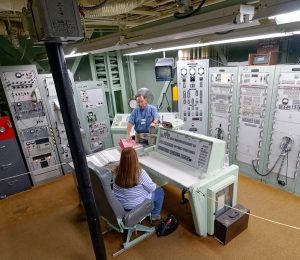
After yet another door and short passageway, and we were in the control room. This is where the two crew members monitored the missile, checked on equipment, and would launch the missile if so ordered. A volunteer from the tour group sat at the control panel and the guide went through the scenario from going on alert to her “pushing the button.”
From there we were led back through the door and through the two hundred feet of tunnel that connects the control center with the missile silo. Lining the tunnel are the communication cables between the missile and the launch control center. There are occasional joints to allow for the motion of shaking ground during a nuclear attack, which you can see in the accompanying video that begins in the control room and ends in the connecting tunnel.
This tour “ends” (but not really since there’s only one way in and out) with a close-up view of the missile through a glass wall, but they also offer several other tours on a limited schedule including a four-hour top-to-bottom tour that explores the entire site and a special overnight tour.
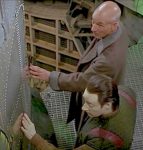
Star Trek fans might recognize the site from “Star Trek: First Contact” as the missile base where Zefram Cochrane built and launched his warp ship. While the wooded area representing Montana was filmed in the San Gabriel Mountains near Los Angeles, the interiors were filmed at this museum, the Titan II standing in for the Phoenix.
I highly recommend this museum. For those of us who remember the Cold War its a reminder of a time when the threat of the “Evil Empire” was beamed through our televisions nightly. For those who don’t it’s a look into a time when two world superpowers stood like gunfighters on a dusty street, each waiting for the other to fast-draw. And it should not be forgotten that there are still about five-hundred similar silos in active duty in the United States, around 280 in Russia, plus a smattering in China, India, Israel, and North Korea.

